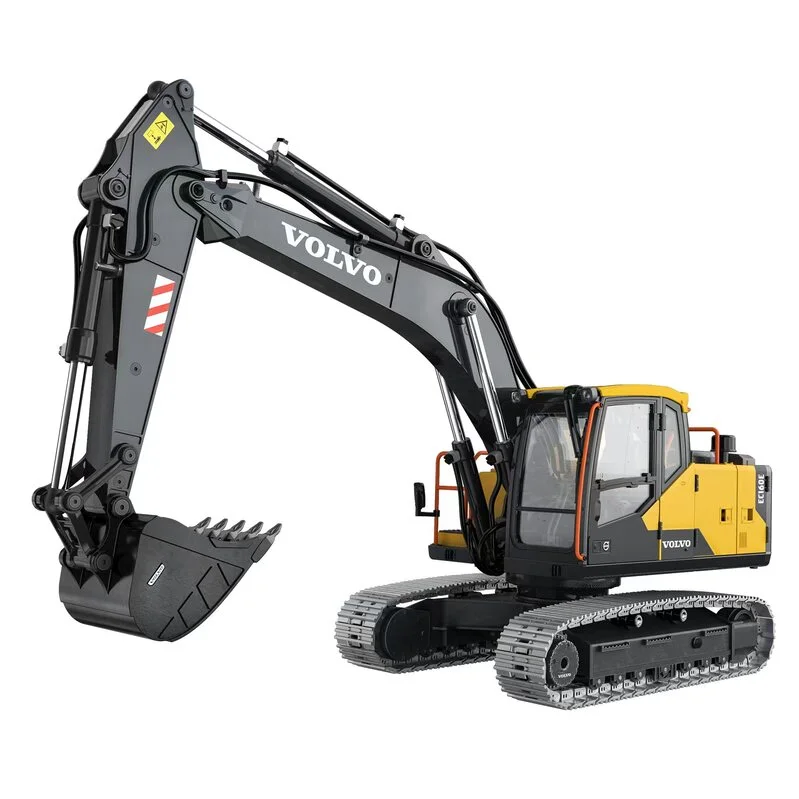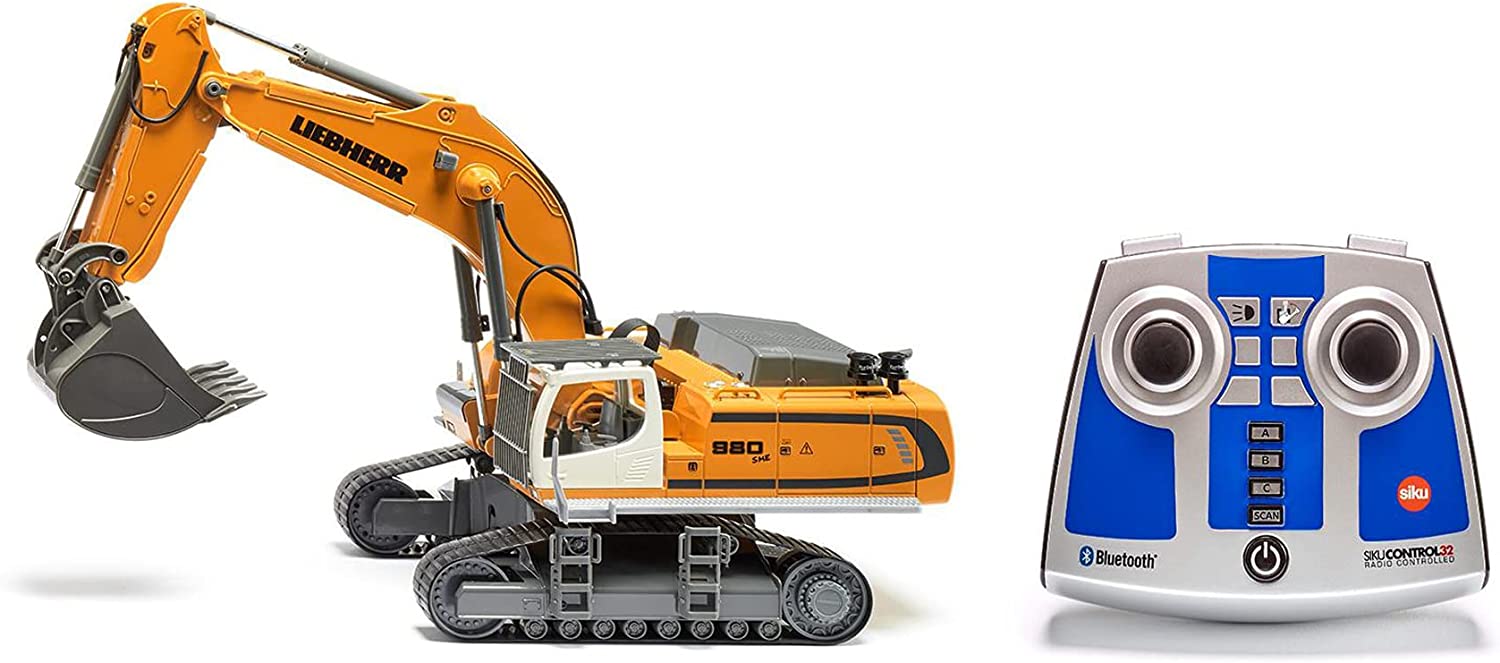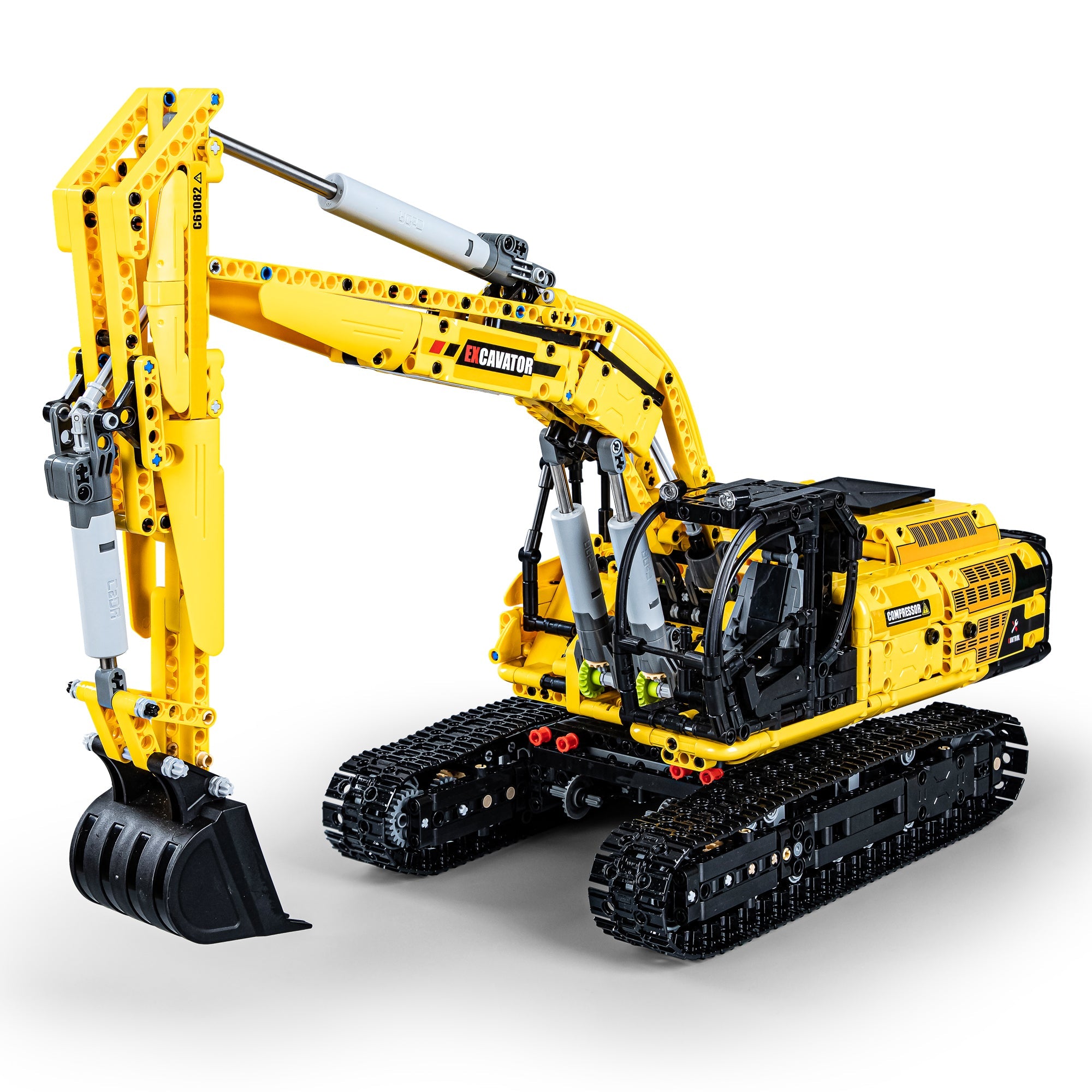The Vital Features of Excavator That Make It a Must-Have Tool
Excavators are vital in the building and construction and landscape design sectors. Their functional attachments enable for a variety of jobs, from excavating to demolition. In addition, they boast remarkable digging depth and reach, powered by robust engines. Operator convenience and small designs enhance usability in different atmospheres. What really establishes excavators apart are their innovative hydraulic systems and longevity. Comprehending these features can clear up why they are considered essential devices on any kind of work site.
Functional Accessories for Enhanced Performance
Excavators are effective machines on their own, the addition of flexible accessories greatly enhances their performance. These add-ons transform a common excavator right into a multi-purpose device, ideal for a selection of jobs. Pails, for instance, can be found in numerous sizes and shapes, making it possible for operators to dig, scoop, and move materials successfully. Hydraulic thumbs can be included for boosted gripping and handling of large products, such as logs or rocks.Furthermore, specialized accessories like augers and breakers enable drilling and demolition work, expanding the excavator's energy on building and construction websites. remote control excavator. Grapples are one more option, ideal for moving and sorting debris. This flexibility not just boosts efficiency but also lowers the demand for several machines, conserving time and expenses. By furnishing excavators with the best attachments, drivers can deal with diverse tasks, making them important in the building sector
Superior Excavating Depth and Get To
Excavators are created with exceptional digging deepness and reach, allowing them to navigate in tight areas and gain access to hard-to-reach locations. This capability is crucial for different construction and excavation tasks, where typical equipment may drop short. With flexible boom arms and extendable tracks, excavators can easily browse unequal surface while preserving stability.The excavating depth can differ considerably amongst models, usually ranging from 10 to 25 feet, relying on the design and objective. This feature allows operators to excavate structures, trenches, and other deep frameworks efficiently. Furthermore, the reach of an excavator permits for precise digging and material handling without rearranging the machine often, conserving time and labor costs.Ultimately, the superior digging deepness and reach of excavators make them essential for experts looking for to finish complex jobs with precision and performance. Their flexibility improves performance on work sites, showcasing them as a vital device in modern-day construction.
Powerful Engine Performance

When it concerns effectiveness and efficiency on building and construction websites, effective engine efficiency plays an essential duty in the capabilities of an excavator. A durable engine produces considerable horse power, permitting the equipment to take on sturdy jobs easily - remote control excavator. This stamina equates into faster cycle times, allowing operators to complete tasks extra quickly.Additionally, effective engines supply the necessary torque to manage challenging surfaces and differed tons, making sure that the excavator can carry out efficiently under various problems. Whether it is lifting, digging, or relocating materials, the engine's performance directly impacts the general functional effectiveness of the machine.Furthermore, developments in engine technology have actually brought about enhanced fuel performance, lowering operational costs while keeping power outcome. Ultimately, the engine's efficiency serves as the foundation of an excavator, verifying its status as an important device in the building sector
Advanced Hydraulic Solutions

Boosted Lifting Capability
A considerable improvement in raising ability can be attributed to sophisticated hydraulic systems found in modern-day excavators. These systems use high-pressure liquid to create higher force, enabling drivers to lift heavier loads effortlessly. The engineering behind these hydraulics warranties peak efficiency, giving an impressive power-to-weight ratio that enhances total performance. As an outcome, excavators can deal with requiring jobs, such as raising huge materials or tools, without jeopardizing stability. Additionally, the robust design of hydraulic parts adds to increased longevity and reliability, making them ideal for different construction atmospheres. This boosted training ability not just reduces the time required for tasks however also decreases the need for additional equipment, proving vital for both efficiency and cost-effectiveness in the construction market.
Enhanced Precision Control
Conventional excavators typically had a hard time with precision, contemporary hydraulic systems have changed control mechanisms, making it possible for drivers to perform tasks with impressive accuracy. These advanced systems utilize symmetrical control shutoffs that enable smoother and more receptive movements, substantially decreasing the margin for error. Operators can now carefully tune the excavator's movements, making it less complicated to navigate limited areas and manage delicate products. Enhanced responses systems even more notify drivers of real-time performance, ensuring ideal sychronisation between the equipment and driver. This enhanced accuracy not only improves efficiency however additionally boosts security on work websites, reducing the threat of mishaps. Consequently, modern-day excavators outfitted with sophisticated hydraulic systems are very useful tools for building and construction and excavation projects requiring meticulous precision.
Driver Convenience and Visibility
Driver convenience and exposure are essential elements in the layout of modern excavators (remote control excavator). Features such as ergonomic seat layout, enhanced visibility choices, and effective control layouts greatly enhance the operator's experience and efficiency. Prioritizing these elements guarantees that drivers can work properly and safely in numerous conditions
Ergonomic Seat Layout
Comfort and exposure are vital in excavator style, with the ergonomic seat playing an important duty in enhancing the driver's experience. An ergonomic seat is engineered to support the driver's body, decreasing exhaustion during long hours of procedure. Adjustable functions, such as seat elevation, back-rest angle, and lumbar assistance, accommodate individual choices and advertise perfect stance. These adjustments improve convenience and enable the operator to keep concentrate on tasks without discomfort. Furthermore, a properly designed seat can provide much better lateral assistance, enabling smoother maneuvering when the excavator functions. This thoughtful layout not only improves performance yet likewise adds to total safety, making sure that drivers can execute their duties efficiently and effectively.
Improved Presence Features
The style of an excavator extends beyond just the seat, with improved exposure functions playing a substantial duty in driver convenience and total safety and security. Huge home windows and purposefully located mirrors provide drivers with a clear view of their environments, decreasing dead spots. This layout factor to consider enables better spatial awareness, which is important in busy work environments. Additionally, several excavators include rearview cams and progressed surveillance systems that aid drivers in navigating limited rooms. The assimilation of these visibility includes not just advertises safety and security yet likewise lowers driver fatigue by making it possible for less complicated monitoring of workspace. Ultimately, enhanced exposure adds to extra effective operations and helps assure that excavators can execute their tasks efficiently and safely.
Control Format Performance
While maneuvering complex job websites, an effective control format greatly boosts both operator convenience and visibility. A well-designed control arrangement assurances that drivers can access vital features with minimal initiative, decreasing exhaustion during long hours. Ergonomic joystick positionings and intuitive button arrangements permit smooth operation, allowing drivers to maintain concentrate on the job handy. Additionally, clear exposure of both the workspace and the control panel is important for safety and accuracy. Modern excavators usually incorporate adjustable seats and control setups to accommodate different operator preferences, additionally enhancing comfort. Eventually, an attentively made control layout not only improves productivity however additionally cultivates a safer working atmosphere by permitting operators to react quickly to altering problems.
Compact Style for Urban Environments
As city building and construction sites frequently deal with area restraints, a portable design becomes essential for excavators operating in these atmospheres. These makers are crafted to browse tight spaces, permitting reliable ability to move in jampacked work sites. A reduced impact allows them to function carefully to existing structures, lessening interruption and making best use of productivity.The portable layout usually consists of shorter tracks and a tighter turning distance, promoting procedure in narrow alleys and constrained locations. Light-weight materials add to reduce of transport, making it simpler to relocate the excavator from one location to an additional within the urban landscape.Additionally, several small excavators are geared up with attributes such as extendable arms and functional accessories, enhancing their capability while preserving a tiny dimension. This versatility allows drivers to tackle a range of tasks, from digging to demolition, all while suitable perfectly right into the constraints of metropolitan environments.

Durability and Upkeep Considerations
Longevity stands as a vital factor in the efficiency and longevity of excavators, specifically in demanding urban settings. These devices undergo extensive conditions, consisting of varying dirt types, severe temperatures, and high-frequency usage. Top quality products and robust building are necessary for making sure that excavators can endure these challenges without endangering functionality.Regular upkeep is just as vital in preserving durability. Arranged examinations, timely oil adjustments, and the substitute of used components contribute substantially to an excavator's life expectancy. Operators must likewise take notice of hydraulic systems, tracks, and undercarriages, as these parts commonly birth the burden of wear and tear.Investing in resilient excavators with substantial maintenance strategies boosts dependability and reduces downtime, eventually resulting in enhanced productivity on construction websites. For that reason, comprehending the interplay in between durability and upkeep is crucial for any person taking into consideration the acquisition of an excavator for city jobs.
Often Asked Concerns
How Do Excavators Compare to Various Other Building And Construction Equipment?
Excavators stick out amongst building and construction tools because of their convenience, allowing jobs such as grading, digging, and lifting. Contrasted to others, their hydraulic capacities use greater effectiveness and power, making them important on numerous work websites.
What Safety Includes Are Included in Modern Excavators?
Modern excavators incorporate numerous security attributes, including rollover defense systems, alarms, and progressed exposure enhancements. These elements work together to decrease dangers, making sure operator security while enhancing performance on building sites and other demanding atmospheres.

Can Excavators Be Utilized in Winter Season Issues?
Excavators can certainly be utilized in winter months problems, provided they are geared up with appropriate wintertime add-ons and precautions are taken. Proper maintenance and modifications improve their efficiency, making sure reliable procedure regardless of challenging weather scenarios.
What Is the Ordinary Life-span of an Excavator?
The ordinary life-span of an excavator commonly varies from 7,000 to 10,000 hours of procedure. This period can substantially rely on upkeep techniques, running problems, and the certain design's toughness and style functions.
Just how Do I Select the Right Excavator Size for My Task?
Picking the ideal excavator dimension includes assessing task scope, website conditions, and product kinds. Think about elements like reach, depth needs, and weight ability to ensure maximum efficiency and safety and security throughout operation. Size issues significantly in project success. In addition, the reach of an excavator enables for accurate digging and product handling without repositioning the equipment frequently, conserving time and labor costs.Ultimately, the superior digging deepness and reach of excavators make them indispensable for experts looking for to complete complex jobs with precision and efficiency. Convenience and visibility are vital in excavator design, with the ergonomic seat playing an important role in boosting the operator's experience. The design of an excavator expands beyond simply the seat, with boosted visibility functions playing a substantial duty in driver comfort and total safety and security. Modern excavators typically include flexible seats and control settings to fit numerous operator choices, even more improving convenience. Lightweight products add to ease of transportation, making it simpler to move the excavator from one location remote control excavator to one more within the metropolitan landscape.Additionally, lots of small excavators are outfitted with attributes such as versatile attachments and extendable arms, enhancing their functionality while maintaining a small size.